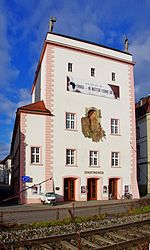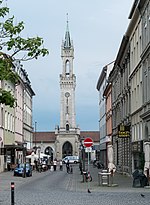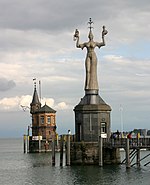Konstanz Minster
11th-century churches in GermanyBasilica churches in GermanyBuildings and structures in Konstanz (district)Former cathedrals in GermanyGothic architecture in Germany ... and 3 more
Roman Catholic cathedrals in Baden-WürttembergRomanesque architecture in GermanySites of papal elections

Konstanz Minster or Konstanz Cathedral (German: Konstanzer Münster) is a historical building in Konstanz, southern Germany, the proto-cathedral of the former Roman Catholic diocese of Konstanz (dissolved in 1821).
Excerpt from the Wikipedia article Konstanz Minster (License: CC BY-SA 3.0, Authors, Images).Konstanz Minster
Münsterplatz, Verwaltungsgemeinschaft Konstanz
Geographical coordinates (GPS) Address Nearby Places Show on map
Geographical coordinates (GPS)
| Latitude | Longitude |
|---|---|
| N 47.663333333333 ° | E 9.1763888888889 ° |
Address
Konradikapelle
Münsterplatz
78462 Verwaltungsgemeinschaft Konstanz, Konstanz-Altstadt
Baden-Württemberg, Germany
Open on Google Maps








